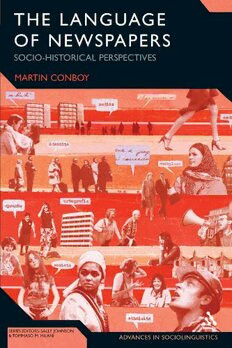
The Language of Newspapers: Socio-Historical Perspectives (Advances in Sociolinguistics) PDF
185 Pages·2010·0.941 MB·
Most books are stored in the elastic cloud where traffic is expensive. For this reason, we have a limit on daily download.
Preview The Language of Newspapers: Socio-Historical Perspectives (Advances in Sociolinguistics)
Description:
This title charts the connections between the language of journalism in England and its social impact on audiences from the seventeenth century to the present day. This book charts the connections between the language of journalism in England and its social impact on audiences and social and political debates from the first emergence of periodical publications in the seventeenth century to the present day. It extends work done on the language of the media to include an historical perspective, adding to wider contemporary debates about the social impact of the media. It draws upon the field of historical pragmatics, while retaining a concentration on the development of a particular form of media language, the newspaper, and its role in refracting and contributing to social developments. Dialogue is created between sociolinguistics and journalism studies. It is ideally suited to advanced students in these areas and in linguistics and media studies in general. Since the emergence of sociolinguistics as a new field of enquiry in the late 1960s, research into the relationship between language and society has advanced almost beyond recognition. In particular, the past decade has witnessed the considerable influence of theories drawn from outside of sociolinguistics itself. Thus rather than see language as a mere reflection of society, recent work has been increasingly inspired by ideas drawn from social, cultural, and political theory that have emphasised the constitutive role played by language/discourse in all areas of social life. "The Advances in Sociolinguistics" series seeks to provide a snapshot of the current diversity of the field of sociolinguistics and the blurring of the boundaries between sociolinguistics and other domains of study concerned with the role of language in society.
See more
The list of books you might like
Most books are stored in the elastic cloud where traffic is expensive. For this reason, we have a limit on daily download.
